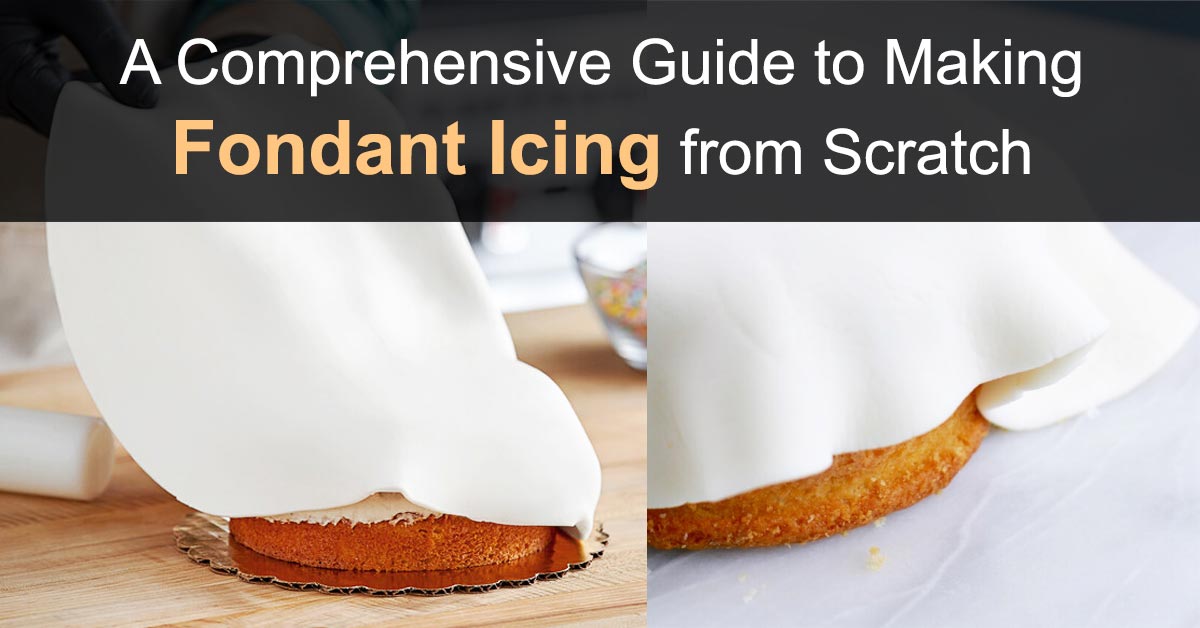Fondant icing is a versatile and elegant option for decorating cakes and pastries, favored by both amateur bakers and professional pastry chefs alike. Its smooth, pliable texture allows for intricate designs and a flawless finish. While store-bought fondant is readily available, making it from scratch offers the opportunity to customize flavors and achieve a superior taste and texture. In this comprehensive guide by ZeroIn Academy, we’ll explore the step-by-step process of making fondant icing from scratch, along with tips, tricks, and troubleshooting advice to ensure your fondant creations are a sweet success.
Understanding Fondant:
Before delving into the recipe, it’s essential to understand what fondant is and its characteristics. Try our baking classes in Chennai for a detailed understanding of using fondant. Fondant is a type of sugar paste used in cake decorating. It consists primarily of sugar, water, and gelatin or gum tragacanth for elasticity. Fondant can be rolled out thinly to cover cakes entirely, molded into shapes, or used for intricate decorations.
Ingredients:
To make fondant icing from scratch, you’ll need the following ingredients:
- 2 lb (900g) powdered sugar (also known as icing sugar or confectioners’ sugar)
- 1/3 cup (80ml) water
- 1 tablespoon unflavored gelatin
- 1/2 cup (120ml) glucose syrup or corn syrup
- 1 tablespoon glycerin (optional, but recommended for added elasticity and pliability)
- Flavoring extracts (such as vanilla, almond, or lemon) or food coloring (optional, for flavor and color customization)
- Vegetable shortening or powdered sugar (for dusting and kneading)
Step-by-Step Instructions:
1. Bloom the gelatin:
In a small bowl, powder the gelatin over the water and let it sit for about 5-10 minutes until it absorbs the water and becomes soft.
2. Heat the gelatin:
Once the gelatin has bloomed, place the bowl in a microwave or heat it gently over a double boiler until the gelatin is completely dissolved. Be careful not to boil the mixture.
3. Combine the ingredients:
In a large microwavable bowl, combine the glucose syrup (or corn syrup) and glycerin (if using). Heat the mixture for about 30 seconds until warm and fluid.
4. Mix the gelatin:
Stir the dissolved gelatin into the warm glucose syrup mixture until well combined.
5. Add flavoring and coloring:
If desired, add a few drops of flavoring extract or food coloring to the mixture and stir till its evenly distributed.
6. Gradually add powdered sugar:
Begin adding the powdered sugar to the liquid mixture, a cup at a time, stirring continuously until a thick paste forms.
7. Knead the fondant:
Once the mixture becomes too thick to stir, transfer it onto a clean work surface dusted with powdered sugar or coated with vegetable shortening. Knead the fondant like dough, incorporating the remaining powdered sugar until it becomes smooth, pliable, and no longer sticky. If the fondant is too dry, add a few drops of water; if too wet, add more powdered sugar.
8. Rest the fondant:
Wrap the fondant tightly in plastic wrap and rest at room temperature for 30 minutes to let the flavors to melt and the fondant to firm up slightly.
9. Ready to use:
Your homemade fondant is now ready to roll out and use for covering cakes, shaping decorations, or creating intricate designs.
Tips and Tricks:
Temperature control is key:
Fondants can be sensitive to temperature, so it’s essential to work in a cool, dry environment. If the fondant becomes too warm and sticky while kneading, refrigerate it for a few minutes to firm up. Our cake baking classes in Velachery teaches various tricks to control the temperature for the best cooking experience.
Storage:
Store any unused fondant in an airtight container at room temperature for two weeks. You can also freeze fondant for longer storage; just keep it overnight in the refrigerator before using.
Flavor variations:
Experiment with different flavorings and extracts to customize the taste of your fondant. Popular options include vanilla, almond, chocolate, and citrus flavors.
Color customization:
Fondant can be tinted with gel food coloring to achieve a wide variety of colors. Start with a small amount of coloring and knead it into the fondant until evenly distributed, adding more as needed to reach the desired shade.
Troubleshooting:
Sticky fondant:
If your fondant is too sticky, knead in more powdered sugar until it reaches the desired consistency. Avoid adding too much powdered sugar at once, as it can make the fondant dry and crumbly.
Cracking or tearing:
If your fondant is cracking or tearing while rolling it out, it may be too dry. Knead in a small amount of vegetable oil or glycerin to add moisture and elasticity.
Air bubbles:
To keep air bubbles from forming when rolling out fondant, use a rolling pin to gently smooth the surface and release any trapped air. If air bubbles do occur, use a pin to puncture them and smooth the fondant back into place.
Conclusion:
Making fondant icing from scratch allows for endless creative possibilities in cake decorating. With the right ingredients, techniques, and a bit of practice with our baking institute in Chennai, you can get professional-quality results that are sure to impress. Whether you’re covering a cake, sculpting decorations, or adding intricate details, homemade fondant offers a delicious and versatile option for elevating your baked creations to the next level. So gather your ingredients, and let your imagination take over to master the art of fondant. Happy baking!



